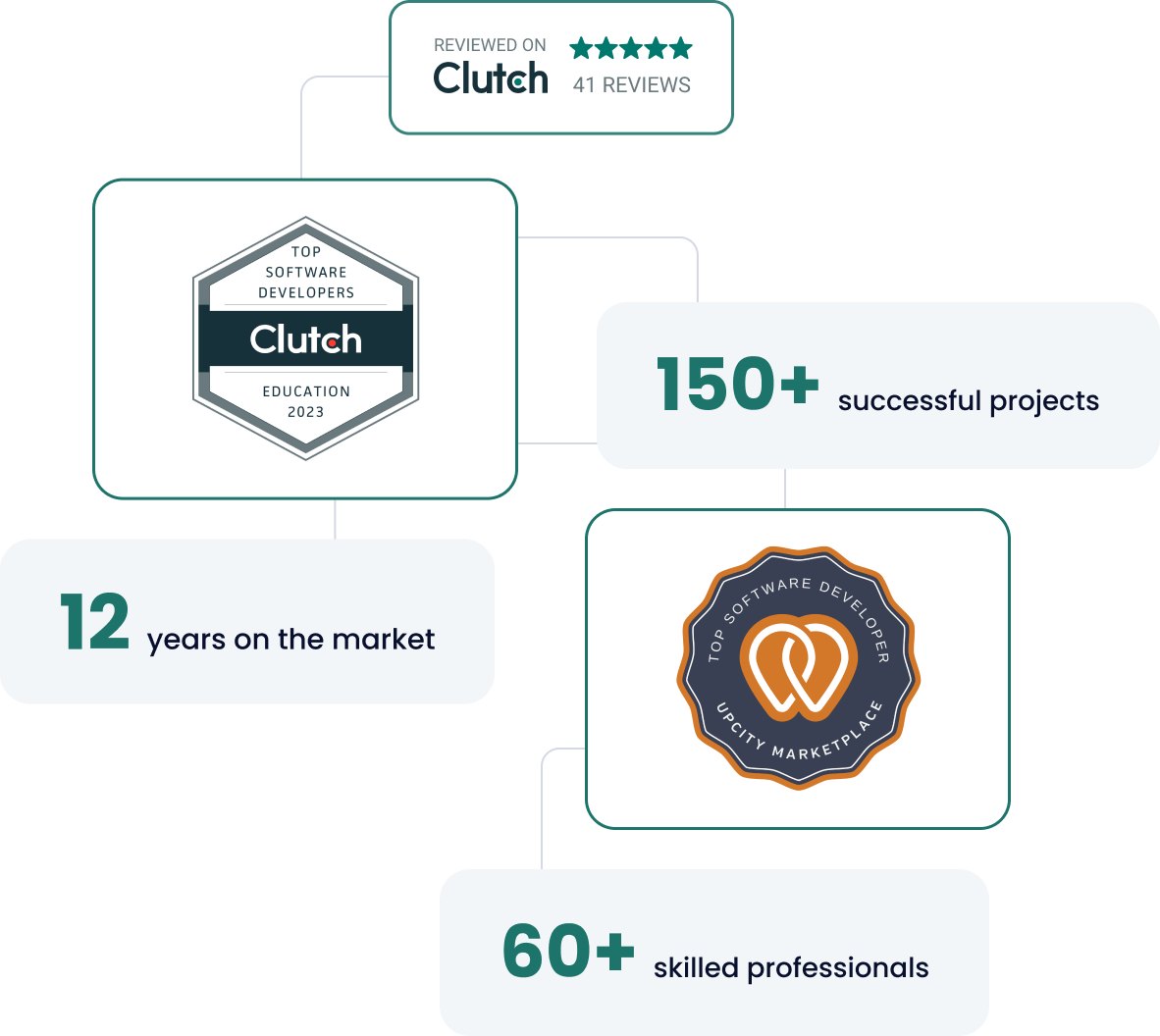The development of school management system software is a complex process that involves multiple steps. Each school management app development company has a different approach to it. Typically, the process looks as follows:
1. Requirement gathering. At this stage, the dedicated team communicates with key stakeholders (school administrators, parents, teachers, and students) to gather requirements and define the features of school management software. It may involve several interviews, surveys, and meetings to better understand the needs of each group.
2. Planning and design. This phase considers various teaching methods and user experience strategies to create an intuitive system. School management application developers decide on the system architecture, design databases, and create the user interface. They also choose the tech stack, utilizing the latest technologies to build a future-proof and scalable software solution.
3. Development. This stage involves front-end development, back-end development, and integrations. During back-end development, the team implements the server-side logic, API endpoints, and database interactions. Meanwhile, front-end developers build the client-side application, including design, user experience, and functionality. The dev team also implements user authentication and role-based access control to make school management software solutions secure. We ensure the system functions as a reliable interactive platform to enhance the learning experience of students and educators.
4. Testing. At the testing stage, QA engineers test school management software solutions and their features to ensure they work as intended and don’t interrupt the learning process — that’s a part of school management services. It involves several tests, including functional testing, compatibility testing, performance testing, usability testing, security testing, integration testing, and regression testing. Quality assurance allows educational institutes to minimize the amount of bugs before release, improving the user experience of students, teachers, and parents.
Once these four steps are complete, the dedicated team deploys the school management system software. After that, it provides continuous maintenance and support to ensure its stable work.
 USA
USA











































